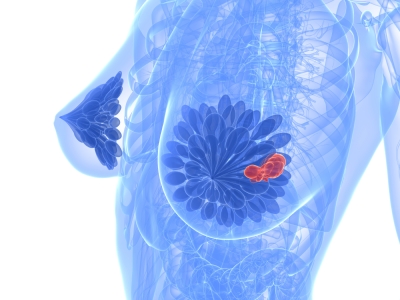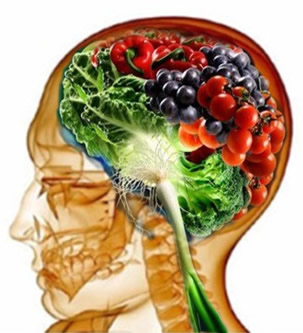COPING WITH ENDOMETRIOSIS
Anyone that has Endometriosis knows that it is a painful disorder to say the least. Endometriosis is a disorder in which the tissue that habitually lines the inside of the uterus, the endometrium, grows outside your uterus, the endometrial implant. Endometriosis most regularly involves your ovaries, bowel or the tissue lining your pelvis. When dealing with endometriosis the banished endometrial tissue acts as it normally would; it thickens, breaks down, bleeds with each menstrual cycle. Because this displaced tissue has no place to exit the body, it becomes trapped. When Endometriosis involves the ovaries, which come in cyst form, referred to as endometromas, it causes inflammation and scar tissue as well as adhesions where abnormal tissue that binds organs together.
SYMPTOMS
Typical menstrual period symptoms such as cramping and pelvic pain are experienced; however, on a much more severe level. Further common symptoms include…
-Painful periods (medically known as dysmenorrhea; Pelvic pain, cramping, and even lower back/ abdominal pain before-during-after your period.)
-Pain with intercourse.
-Pain with bowel movements or urination.
-Excessive bleeding, menorrhagia, or bleeding between periods, menometrorrhagia.
-Infertility.
-Fatigue, diarrhea, constipation, bloating or nausea.
CAUSES
The causes of Endometriosis are not certain but are speculated to consist of:
-Retrograde menstruation. (This is when menstrual blood containing endometrial cells flow back through the Fallopian tubes into the pelvic cavity instead of out of the body.
-Embryonic cell growth. (The cells lining the abdominal and pelvic cavities come from embryotic cells which can cause them to develop into endometrial tissue).
-Surgical scar implantation. (After a surgery, ie: hysterectomy or C-section, endometrial cells attach to a surgical incision.
-Endometrial cell transport. (The blood vessels transport endometrial cells to other parts of the body).
-Immune System Disorder. (the body does not recognize the endometrial tissue growing outside the uterus).1
RISK FACTORS/ COMPLICATIONS
The risk factors that are associated with Endometriosis consist of…
-Infertility. (Approximately one third to one half of women with Endometriosis have difficulty getting pregnant).
-Ovarian Cancer. (Women that share both ovarian cancer with endometriosis have highly increased risk).
-Inheritance of disorder. (Mothers, Aunt’s, Sister’s)
-Pelvic infections. (Increased family history)
-Uterine abnormalities.1

MEDICAL TREATMENT
Although no medical cure exists for endometriosis sometimes medications, surgery, home remedies, and enzyme therapy have all been proven to help. Most Doctors initially treat patients with this disorder with first hormones to suppress growth of abnormal cells. If further action is needed some patients undergo surgery to remove scar tissue and endometriosis or even at drastic measures removal of the ovaries, uterus, and Fallopian tubes 2 all of which decrease fertility further and further.
NATURAL TREATMENT/ HOME REMEDIES
There are home remedies to put to use stand alone or in addition to further treatment if pain persist and you can’t seem to find comfort. These include:
-Warm baths. 
-Heating pads to help relax pelvic muscles, reducing cramping and pain.
-Regular exercise has been seen to improve symptoms.
-Healthy well balanced diet.4
ENZYME THERAPY
You may be surprised to know that Systemic Enzyme therapy is one of “the best and most effective natural therapies for endometriosis.”3 Endometriosis and systemic enzymes have been proven to increase the breakdown of scar tissue and degradation of tissues left behind from endometriosis.5 Further, these enzymes provide aid in reducing inflammation caused by scar tissue surrounding the organs and pain associated with endometriosis. The blood cleansing properties of systemic enzymes containing Nattokinase and enzyme/co-factor blend have been seen to bring proper circulation to the reproductive system and get the immobile blood cleared out. The Systemic enzyme Serrapeptase is known to even digest non-living tissue, blood clots, cysts, arterial plaque and inflammation in all forms.4 Systemic enzymes containing Serrapeptase coupled with Systemic Enzymes containing Nattokinase and enzyme/co-factor blend together create a proliferating effect that has been seen in many trail cases to improve overall symptoms of Endometriosis considerably.
-
http://www.mayoclinic.org/diseases-conditions/endometriosis/basics/definition/con-20013968
-
http://www.cedars-sinai.edu/Patients/Programs-and-Services/Minimally-Invasive-Gynecologic-Surgery-Center/Treating-Endometriosis-.aspx?gclid=CIWf4NSTzswCFc5hfgodpVILWw
-
http://natural-fertility-info.com/fertility-enzyme-therapy
-
http://www.endo-resolved.com/endometriosis_adhesions.html
-
https://www.losethebackpain.com/blog/2014/08/12/fight-endometriosis-with-systemic-enzyme-therapy/








 There are many options to choose from when trying to balance microflora in the gut one of them is following a yeast cleansing diet. Most candida cleansing diets focus on eliminating yeast feeding foods such as those that are high in sugar and white flour. A general rule of thumb to follow with these diets is to eliminate processed foods and replace them with natural foods and whole grains. For example, popular diet choices include the raw, paleo, vegetarian, and vegan diets.
There are many options to choose from when trying to balance microflora in the gut one of them is following a yeast cleansing diet. Most candida cleansing diets focus on eliminating yeast feeding foods such as those that are high in sugar and white flour. A general rule of thumb to follow with these diets is to eliminate processed foods and replace them with natural foods and whole grains. For example, popular diet choices include the raw, paleo, vegetarian, and vegan diets.




 Dealing with the inflammation is also important in preventing the onset of other illnesses. Adding natural supplements that have anti-inflammatory properties will help in the process of restoring beneficial bacteria as well. Cytokine signaling can be decreased with the aid of Serrapeptase, an enzyme with both fibrinolytic and anti-inflammatory properties, in combination with prebiotics and probiotics it will gradually improve the guts health, digestion, and eventually ones attempt at staying lean and preventing disease.
Dealing with the inflammation is also important in preventing the onset of other illnesses. Adding natural supplements that have anti-inflammatory properties will help in the process of restoring beneficial bacteria as well. Cytokine signaling can be decreased with the aid of Serrapeptase, an enzyme with both fibrinolytic and anti-inflammatory properties, in combination with prebiotics and probiotics it will gradually improve the guts health, digestion, and eventually ones attempt at staying lean and preventing disease.



 Women who have to deal with fibroids know that managing levels of the hormone estrogen and progesterone is very important. Most prescribed medication deals around this issue since it has been suggested fibroids growth may be linked to a high estrogen and progesterone setting. As they grow the symptoms that accompany them are more pronounced. Pain, heavy bleeding, and inflammation are common results of these and can possibly lead to other underlining issues. However, most women with uterine fibroids do not experience any symptoms. It is likely for women who do have heavy or in between period bleeding, to develop an iron deficiency. While in others fibroids may cause a very painful period but, in some cases this pain could also be a result of endometriosis. When tissue that lines the uterus grows in other areas it is known as Endometriosis, this tissue breaks down and causes bleeding during menstruation. Following the tissue breakdown scar tissue develops in the areas it has grown in, this leading to a painful period.
Women who have to deal with fibroids know that managing levels of the hormone estrogen and progesterone is very important. Most prescribed medication deals around this issue since it has been suggested fibroids growth may be linked to a high estrogen and progesterone setting. As they grow the symptoms that accompany them are more pronounced. Pain, heavy bleeding, and inflammation are common results of these and can possibly lead to other underlining issues. However, most women with uterine fibroids do not experience any symptoms. It is likely for women who do have heavy or in between period bleeding, to develop an iron deficiency. While in others fibroids may cause a very painful period but, in some cases this pain could also be a result of endometriosis. When tissue that lines the uterus grows in other areas it is known as Endometriosis, this tissue breaks down and causes bleeding during menstruation. Following the tissue breakdown scar tissue develops in the areas it has grown in, this leading to a painful period.




